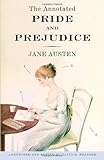 When I was a little girl, I loved dinosaurs. It might be I don’t remember things correctly, but I don’t remember dinosaurs being all that cool when I was a kid. Mrs. Jones taught us about the Trachodon in first grade, the first day of our unit on dinosaurs. I was hooked. The first “chapter” book I ever read was called Prehistoric Monsters Did the Strangest Things. As an accurate dinosaur book, it probably wasn’t very good, but I was fascinated by it. The book was part of a series on animals. I remember clearly that the chapter about Mary Anning’s discovery was titled “What Mary Found.” She wore a pink dress and a white mob cap over her blond curls. I was entranced by the idea of finding a real fossil, just like Mary Anning. Many years later, I still remember much of what I learned, and while my fascination with dinosaurs waned with time, I couldn’t resist picking up a novel about Mary Anning.
When I was a little girl, I loved dinosaurs. It might be I don’t remember things correctly, but I don’t remember dinosaurs being all that cool when I was a kid. Mrs. Jones taught us about the Trachodon in first grade, the first day of our unit on dinosaurs. I was hooked. The first “chapter” book I ever read was called Prehistoric Monsters Did the Strangest Things. As an accurate dinosaur book, it probably wasn’t very good, but I was fascinated by it. The book was part of a series on animals. I remember clearly that the chapter about Mary Anning’s discovery was titled “What Mary Found.” She wore a pink dress and a white mob cap over her blond curls. I was entranced by the idea of finding a real fossil, just like Mary Anning. Many years later, I still remember much of what I learned, and while my fascination with dinosaurs waned with time, I couldn’t resist picking up a novel about Mary Anning.
Remarkable Creatures is the story of Mary Anning and Elizabeth Philpot, women who paved the way for a great deal of scientific discovery in an age when women weren’t even allowed to join the scientific societies that celebrated their discoveries. Mary and Elizabeth come from two very different classes: Mary’s family is poor, working class, while Elizabeth is solidly middle class. Theirs is an unlikely friendship established over their shared fascination with fossils of the remarkable creatures they find on the beach at Lyme Regis. The novel explores their complicated relationship with each other and with the men of science who take credit for their discoveries.
Chevalier brought the setting of Lyme Regis alive, the beaches teeming with fossil ammonites and belemnites. The reader can feel the sea spray and the hard rock holding the fossils fast until they are released by Mary’s skilled hands. Her attention to detail is precise. I could see the layout of Morley Cottage, where the three Philpot sisters lived as well as if I had been there. If you’ve read Girl with a Pearl Earring or Chevalier’s other books, you know she’s a thorough researcher. Chevalier managed to bring these fossil hunters alive for me—they are my kindred spirits. Some of the male characters seem to run together, and I found them hard to distinguish from one another and perhaps not as fully realized, but I think that was most likely Chevalier’s aim.
I am not sure this book qualifies for the Typically British Challenge, as Chevalier is an American living in England and writing about England, but not an English writer herself, so I’ve elected not to count it. I am, however, tagging the post with my Jane Austen tag because the book mentions her and her visit to Lyme Regis as well as Persuasion, which is set there.
Rating:



















